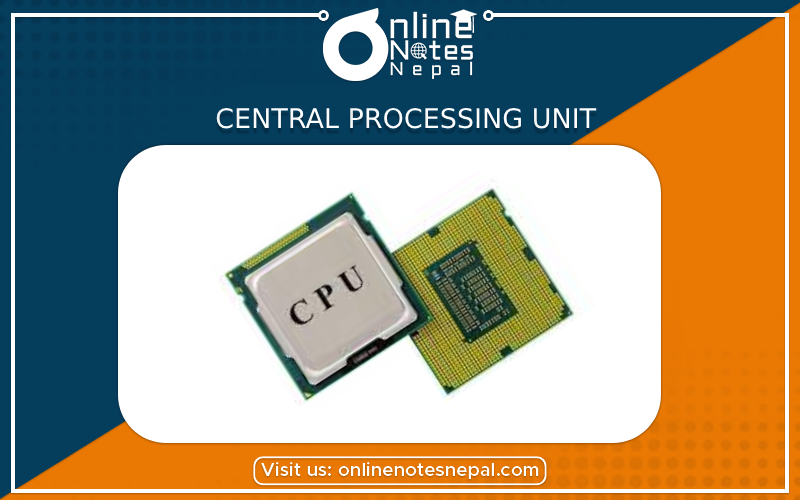Published by: Sujan
Published date: 18 Jun 2021

Central Processing Unit (CPU) is called the brain of the computer as it controls, functions, and operates the whole computer. It performs arithmetic and logical calculations and also operates input and output devices. The brain of the computer i.e. CPU handles all hardware and software components. It accepts the binary data as input, processes the data according to the instructions, and provides the desired result. It is a logical machine so it searches instructions that in the RAM and then executes every sequence. For processing, the CPU takes data from the memory unit, interprets it, and then sends the processed data to the memory for output.
The CPU depends upon a small chip, which is a group of microchips located on the motherboard known as a microprocessor to control instructions and data flow to and from other parts of the computer. The electronic circuit connects the microprocessor to other hardware components.
The functions of the CPU are:
The CPU consists of the following main components:
It is a digital circuit made up of many types of computing circuits. This is the place where the CPU performs all arithmetic and logical problems. ALU consists of two units. They are the Arithmetic unit and the Logical unit. The arithmetic unit deals with simple mathematical problems like addition, subtraction, multiplication, and division. On the other hand, the logical unit performs logical operations like the comparison of numbers, less than, greater than or equal to like conditions. Examples of logic operations are comparisons of values such as NOT, AND, and OR.
It is the main body of the CPU. CU controls things like the timing of operations inside the computer and also sees the processing of data and instructions on the computer. It tells the ALU and memory unit of the computer on how to respond and work. Overall, it directs the operation of the processor. It controls the flow of data between the CPU, its memory, and peripherals. CU also fetches the instructions from the main memory, interprets it and sends the signal to the ALU. It does not perform the work by itself but manages and instructs other parts to perform in a manner.
It is the high speed, small and temporary memory locations in the CPU made by transistors, flip flops, etc. The computer immediately uses them. They store data, instructions, addresses, and other quick results that computer needs instantly. They are the part of Control Unit and ALU. Since their contents can be handled much faster and can be manipulated by CPU, the size of each register helps to find the speed and power of the CPU. Registers are used for different purposes with each of them having their own signified work. Some important registers in CPU are Accumulator which contains results of ALU operations, Instruction Register, Memory Address Register, etc.
{PHOTO}
Fig: Block Diagram of CPU
The computer hardware stores information in the memory unit. It holds the data when the CPU needs and transfers the data in and out of the storage device. It consists of Cache memory primary memory.
Cache memory is a very fast memory placed between RAM and CPU to store frequently used data needed by the CPU. It increases the speed of processing. To access the cache memory, the CPU does not have to use the motherboard’s bus because the data transfers slow the motherboard's capacity. CPU can process at a faster speed by avoiding the system bus. Cache memory, built into the processor is much faster than other caches. It has an L1 (Level 1) cache and L2 (Level 2) cache. It is very expensive so it is smaller in size. They have capacity up to 4MB.
This is the main memory of the computer. It is RAM (Random Access Memory) and ROM (Read Only Memory). They store data during its processing. RAM is volatile so it stores the data temporarily. RAM brings the data and instructions that CPU requires at the of processing. It has a limited storage capacity. ROM is non-volatile but it is read-only. We cannot make changes there. It stores data permanently.